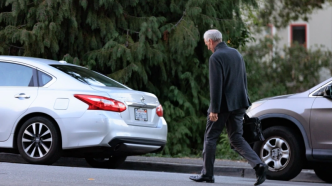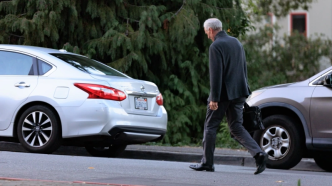

In recent years, large-scale retraction incidents have occurred from time to time, involving different publishing institutions.
"Retraction is not punishment, but for correction of academic papers." A few days ago, Chris Graf, Director of Research Integrity of Springer Nature, a well-known academic publishing institution, and member of the project committee of the World Conference on Research Integrity, said in an exclusive interview with Science and Technology Daily , the retraction is sometimes related to academic misconduct, and sometimes it is the inadvertent mistake of the author or institution.
"Most research is good research, most researchers are honest, and the proportion of academic misconduct is very low." Chris Graf said that large-scale retractions are often due to the systematic control of the publication process by the paper mill. As a result of manipulation, "what publishing institutions need to do is to curb and prevent the 'invasion' of the paper factory, find out the problematic text, pictures or data, and withdraw the manuscript."
In recent years, large-scale retraction incidents have occurred from time to time, involving different publishing institutions. In August last year, the Cambridge Crystallographic Data Center (CCDC) found that nearly 1,000 crystal structure data in 810 papers came from the same paper factory. Subsequently, four publishers including Springer Nature organized special personnel to investigate the journals and papers involved.
In response to the above-mentioned retraction, Chris Graff responded that the investigation is currently underway and has not yet been concluded.
However, in Chris Graf's view, if retraction is equated with academic misconduct, it may cause researchers to dare not correct errors in academic papers. This is an impediment to scientific progress. On the other hand, retractions can be a good thing, especially when handled properly by researchers, journals, and publishers.
He shared one of "the best stories about research integrity".
Years ago, when Pamela Ronald, a researcher in the field of rice disease resistance, published her paper, she found it impossible to replicate the research she had done. The researcher notified the journal editor that there might be problems with the article. Then went back to the lab and found the problem was with the sample and found the technical cause. She then sought the editor's approval and eventually retracted the article. Not only that, the research team held a meeting to explain the problem, pointing out that the above research is not reliable and cannot be used.
"They retracted the manuscript bravely, communicated effectively, and carried out the 'self-correction' of scientific research." Chris Graff commented.
It was revealed that the most common issue submitted to the Springer Nature Research Integrity team tended to be authorship disputes, followed by data-related issues. In this regard, sometimes authors do not manage data well, and sometimes paper factories plagiarize images or make fake images.
The reporter learned that in order to curb paper factories, the Integrity Center of the International Association of Science, Technology and Medical Publishers (STM) has launched a paper factory detection tool, which is jointly invested by Springer Nature and other publishing institutions. “We also trained editors and other relevant personnel to help them identify common symptoms of paper factory papers and how to deal with them.” Chris Graf said.
At present, the level of global attention to research integrity is unprecedented. Years of experience have allowed Chris Graff to discover that scientific research team members will respond to the surrounding environment. If the team has a good scientific research environment and culture, academic misconduct is generally less, and vice versa.
"The scientific research environment is created by the scientific research incentive mechanism." Chris Graff noticed that all countries in the world, including China, are very carefully considering how to formulate the most appropriate incentive mechanism and reward the best scientific research behavior, "in terms of quantity and quality There is a good balance between them. If the incentives are skewed too much towards the number of papers, then it needs to be adjusted.”
The popularization of scientific research integrity education is conducive to creating a good scientific research environment. Chris Graf believes that it is a good way to start with researchers at the beginning of their careers. He greatly appreciates the work of the Reproducible Network Consortium. Through such an alliance, researchers can learn the skills of open science, openly plan their own research, register research designs, share preprints, data and codes, etc., so that open science and scientific research integrity are perfectly combined.
"We hope that researchers are willing to open up their research, which will lead to a very resilient and strong scientific research culture and environment." Chris Graff said.
(Original title ""Retraction is not punishment, but for paper error correction" - Interview with Springer Nature Research Integrity Director Chris Graff")


